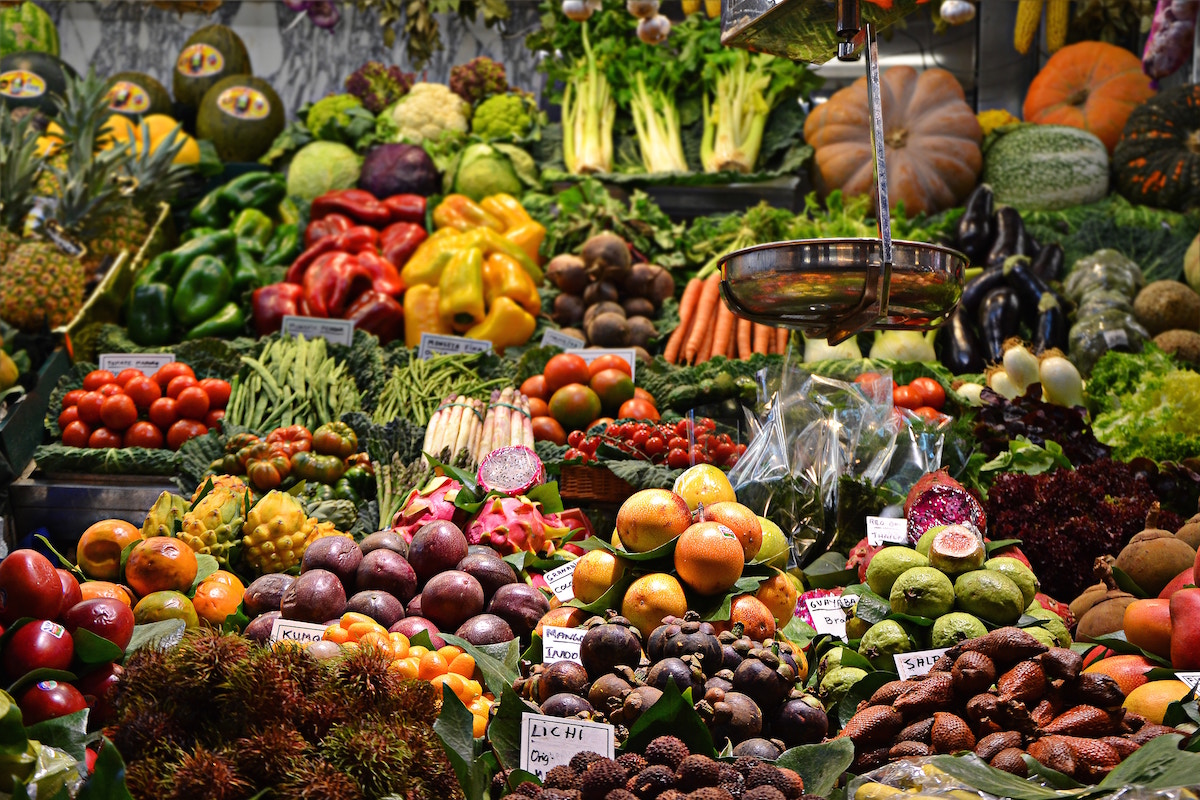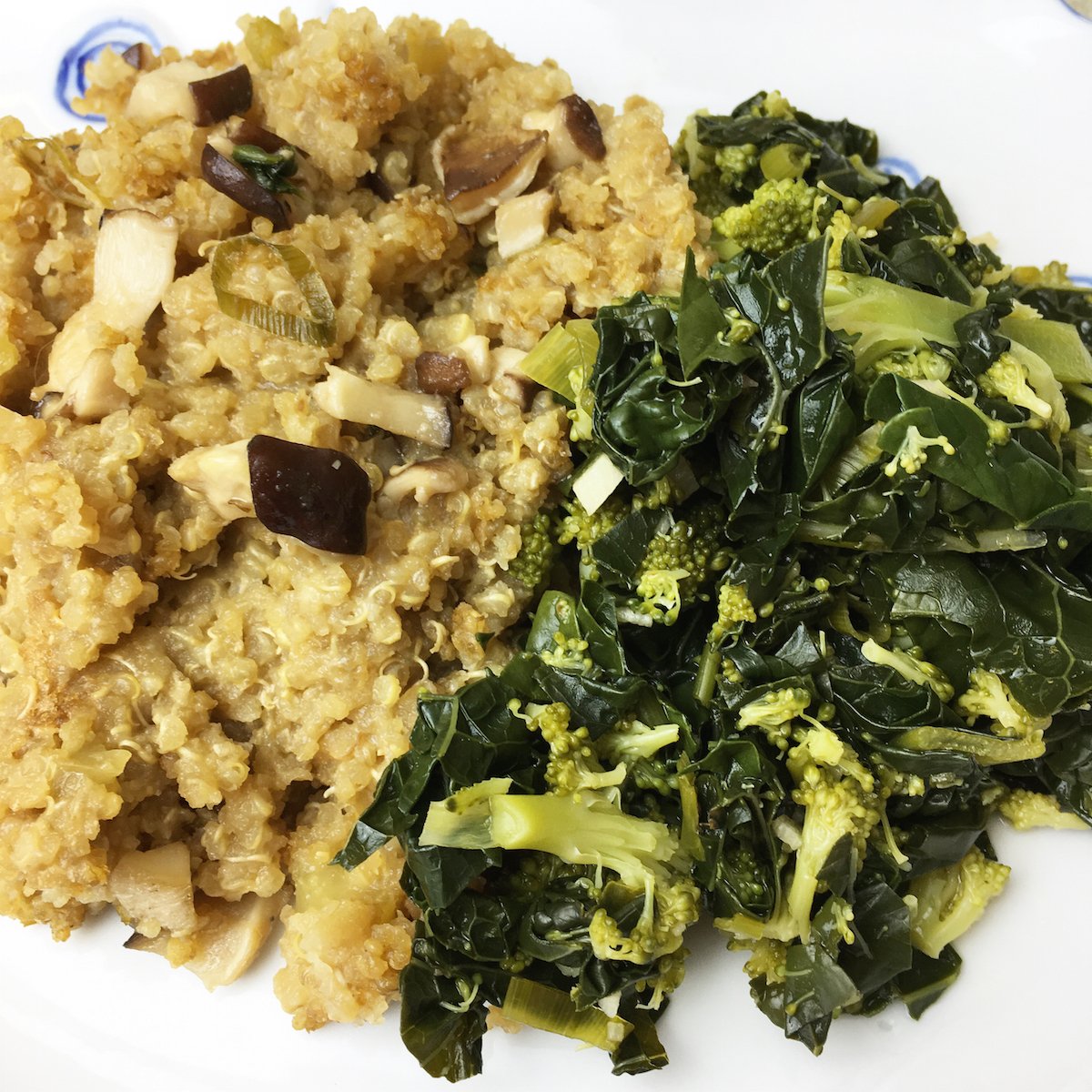Where Do You Get Your Protein?
Since becoming plant-based, both my husband and I often get asked where we get our protein. In fact, it is usually the first thing people say when they hear we don’t eat meat anymore (especially for my 6’2″ very active windsurfing husband). “But where do you get your protein” they exclaim. Or “and you think you get enough protein?” Inside my head I want to laugh and cry at the same time. Marketing and advertising has really confused people, myself included.
Similar to the “low-fat” diet of the 90’s and the margarine craze in the mid-20th century, protein addiction has been cultivated by corporations. Intense advertising campaigns fueled by Big Ag animal production, encourage the consumption of more protein. Almost every product these days label the protein content on the front packaging. We are now in the midst of the protein obsession of the 2010’s ladies and gentlemen, and it’s time to get out of it!
Protein Deficiency
Have you ever actually met someone with a protein deficiency? I haven’t. That’s because modern protein deficiency is generally only seen in 3rd world countries where people are actually starving. They are malnourished and deficient in everything, not just protein! If you live in a 1st world country, this is not a concern for you.
How much protein do we really need?
Along with water, carbs, and fats, protein is absolutely vital for all human life. It is the building blocks of cells and tissues. The World Health Organization estimates we need between 40-60 grams per day. Often people are surprised to learn the ideal amount of protein is much lower than what they’ve been consuming. The WHO estimates the need of an average adult is 0.8 grams per kilogram of body weight. For those of us in the pounds world, you can calculate it by body weight (in pounds) x 0.36 = recommended protein intake (in grams).
If a woman is pregnant or lactating, the protein intake should be increased by 25 grams. Also, infants should have 1.52 grams for each kilogram of body weight. If you are past a growth phase (adulthood), then you are in a maintenance phrase. You have stopped growing physically. This is when one wants to maintain a healthy weight, not grow. Because let’s be real, you won’t be growing upward anymore, only outward.

Excess Protein
Most Americans get around 2-3x their required daily intake of protein, usually in the form of high and saturated fat, low fiber, animal products. This is of great concern because chronic degenerative diseases like diabetes, arthritis, cardiovascular disease, autoimmune diseases, and cancer are all associated with an over-consumption of proteins from meat and dairy products.
Chronic degenerative diseases like diabetes, arthritis, cardiovascular disease, autoimmune diseases, and cancer are all associated with an over-consumption of proteins from meat and dairy products.
Protein, specifically that from animal products, is highly acidic and inflammatory. When being processed, the body must work to balance the acid-alkaline levels. Too much protein overtaxes the systems, causing them to become fatigued and important enzymes may become depleted. For example, when animal protein is ingested the pancreas is stimulated, releasing an extra large supply of digestive juices as part of the bodies buffer system to balance the acid-alkaline levels. More acid causing foods, the more taxed the system will become.
But Where Do You Get Your Fiber?
The real question these days should be “where do you get your fiber?” not “where do you get your protein?” The healthiest cultures have the highest fiber intake; about 5x the amount of the average American. The average citizen in the US gets as little as 20% of their daily food intake from fresh fruits and vegetables. The rest comes from processed foods including animal protein. These numbers should be reversed to 80% fresh whole foods and 20% other. Ever heard of the 80/20 diet?
Clean Protein
What does it mean to have a clean protein? There are different criteria that will classify a protein as “clean”. Pesticides, antibiotics, heavy metals, are all things to look at when choosing protein. Another main aspect to look at is whether it’s healthy for the planet.
Environmentally speaking, animal protein is not! 90% of animals raised for meat are on factory farms, known in the industry as CAFO (concentrated animal feeding operations). These “operations” account for 18% of all green house emissions, that is more than all the transportation (planes, trains, boats, and automobile) emissions combined. They decimate the soil, millions of acres of forests are demolished, and vital ecosystems are destroyed. Shockingly, 95% rainforest destruction, 40% water usage, and 50% ocean acidification can be attributed to animal agriculture. Over 30% of the Earth’s land mass is used for raising animals for food. In the US, a staggering 80% of the agricultural land is used to grow these animals as food as well as the grain to feed them. Imagine how many mouths we could feed if that land were used to grow nutrient dense plant proteins!
On the moral side, the cleanest protein I can ever imagine is one that doesn’t cause the death of another being. If I can live healthfully and get all the best nutrition without causing harm to another, why wouldn’t I? I also don’t want to just survive in this world, I want to THRIVE.
Plant Protein
Often times people associate meat as the only form of protein. But where do you think the cow, gorilla, or elephant get their protein? Plants!! Virtually ALL plants have protein! When we eat a balanced whole foods diet, getting the optimal amount of protein is not a concern. Including whole grains, vegetables, beans, and legumes in your diet will ensure you’re getting clean, healthy protein.
Certain plant combinations create what’s called a complete protein. This means that ALL the essential amino acids are present. The most simple idea is to eat grains with some type of bean or seed. A good example is brown rice with sunflower seeds or rice and soybeans.
However, don’t be alarmed if your meals aren’t considered a “complete protein”. That notion is outdated and has long been refuted. Our bodies absorb and store the different amino acids. Over a period of 1-2 days when we consume the right pieces to the puzzle, they form a complete protein. Whether they are eaten at the same time or not.
“It maintains pools of free amino acids that can be used to do all the complementing for us. Not to mention the massive protein recycling program our body has. Some 90 grams of protein is dumped into the digestive tract every day from our own body to get broken back down and reassembled, so our body can mix and match amino acids to whatever proportions we need, whatever we eat.” -Dr. Michael Gregor
Complete Protein Combinations:
- soybeans and sesame, corn, wheat, or rye
- peanuts with grain or coconut
- grains with legumes or leafy greens
- beans and corn or rice
- peas and wheat
Other Plants with High Protein Content:
- Spirulina – one of the highest protein contents per gram, this green algae is considered a superfood. It packs in 60% protein, iron, managanese, chromiun, vitamins A, K1, K2, and B12. Add a tbsp to your smoothie and make sure to purchase an organic product.
- Spinach – sauté up some, add it to your smoothie, or eat it raw in a salad.
- Broccoli – high in protein, fiber, vitamin K, C, A, and folate, among other vitamins and minerals, this tried and true veggie is a favorite of mine.
- Kale – I use kale similarly to spinach, sautéed up, added in a smoothie, or raw in a salad.
- Mushrooms – full of protein, vitamin B2, B3, and vitamin D.

My Favorite Protein Rich Items
Quinoa – This South American plant is a COMPLETE protein, containing all 20 amino acids, including the 10 essential ones.
Tahini – Made from sesame seeds, tahini sauce is a perfect addition to rice dishes (such as my beloved buddha bowls), vegetable medleys, and salads.
Lentils – I’m obsessed with lentils right now. They’re the perfect addition to any meal; I love pairing them with quinoa.
Brown Rice – Tried and true brown rice…it never fails me.
Sprouted Organic Tofu – Tofu has been around for decades and was often thought of as bland and boring tasteless sponge. Heck, I even stayed away from it for a while. However, I now love it! There are so many great ways to marinate and flavor tofu which make it a new dish every time. Make sure to always buy organic soy products. Conventional soy is sprayed heavily with pesticides and should be avoided.
Extreme Athletes Thriving on Plant-based Nutrition
Want to check out some extreme athletes thriving and achieving even better performance on a plant-based diet? Check out these:
Rich Roll is one of my favorites! Rich is an ultra marathon runner and has a wonderful podcast. Also, on the list is David Carter, a pro football player from the Oakland Raiders as well as over 30% of the Tennessee Titans NFL team. Serena and Venus Williams, Lewis Hamilton, and Kyrie Irving, are a few others changing the view on athletes eating a plant based diets.
A film called “The Game Changers” is coming out sometime this year that showcases Olympians, pro athletes, extreme sports people, and more thriving on a plant based diet. It’s directed by James Cameron who’s been vegan for over 20 years.
If you have questions about what types of protein you should be eating, feel free to shoot me an email at rebecca@therefinedhippie.com. I’m happy to help!
Sources:
Elson M Haas, MD with Buck Levin, PhD, RD. “Staying Healthy with Nutrition”



